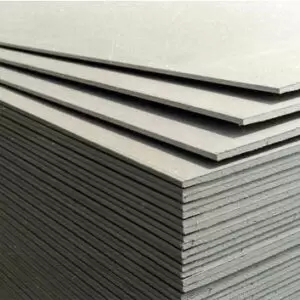Products
- 0086-13306240350
- info@jfmgoboard.com
- No.111Taisheng Avenue,JiaShan Country,JiaXing City, ZheJiang Province,314100,China
Introduction to Fiber Cement Board
Fiber cement board stands as a versatile and reliable building material revolutionizing the construction industry with its exceptional properties and applications. Composed of cement, sand, cellulose fibers, and water, fiber cement board offers a unique blend of durability, strength, and versatility. Understanding its composition and manufacturing process provides insights into its remarkable qualities.
Properties and Advantages
Fiber cement board boasts several key properties and advantages that make it an attractive choice for construction projects. Its unparalleled durability and strength make it resistant to warping, cracking, and rotting, ensuring longevity and stability in various environments. Furthermore, its exceptional fire resistance and waterproofing capabilities provide added safety and protection against the elements. With resistance to pests and rot, fiber cement board offers peace of mind, particularly in regions prone to termite infestations. Additionally, its low maintenance requirements reduce long-term costs and efforts, making it a practical and cost-effective solution for building exteriors and interiors alike.
Comparative Analysis
In comparison with other building materials such as wood and vinyl siding, fiber cement board offers several distinct advantages. Unlike wood, fiber cement board is not susceptible to rot, warping, or insect damage, making it a more durable and long-lasting option. Compared to vinyl siding, fiber cement board provides superior fire resistance and dimensional stability, ensuring consistent performance in various weather conditions. Its non-combustible nature and resistance to moisture make it a safer and more reliable choice for construction projects, particularly in areas prone to wildfires or high humidity.
Applications in Construction
The versatility of fiber cement board extends across a wide range of construction applications. As exterior siding and cladding, it offers unparalleled durability and aesthetic appeal, enhancing the curb appeal and value of residential and commercial properties. Interior wall panels and partitions benefit from its strength and stability, providing a reliable surface for paint, wallpaper, or tile finishes. In roofing and flooring applications, fiber cement board serves as a durable and weather-resistant underlayment, protecting structures from moisture and environmental damage. Moreover, its versatility extends to decorative elements and architectural features, allowing for creative and innovative designs in building facades and interiors.
Installation and Maintenance

- Installing fiber cement board requires careful planning and execution to ensure optimal performance and longevity. A step-by-step installation guide helps contractors and homeowners navigate the process, from surface preparation to fastening and sealing techniques. Proper maintenance and care, including regular inspections and cleaning, help prolong the lifespan of fiber cement board, ensuring its continued performance and aesthetic appeal over time.
Environmental Impact and Sustainability
In addition to its durability and performance benefits, fiber cement board is environmentally friendly and sustainable. Its eco-friendliness stems from its composition of natural materials and minimal environmental impact during production. Furthermore, fiber cement board is fully recyclable at the end of its lifecycle, reducing waste and promoting sustainable building practices. Additionally, its energy efficiency benefits contribute to reducing carbon emissions and energy consumption in buildings, making it a preferred choice for environmentally conscious builders and homeowners.
